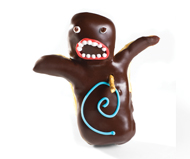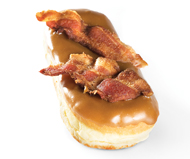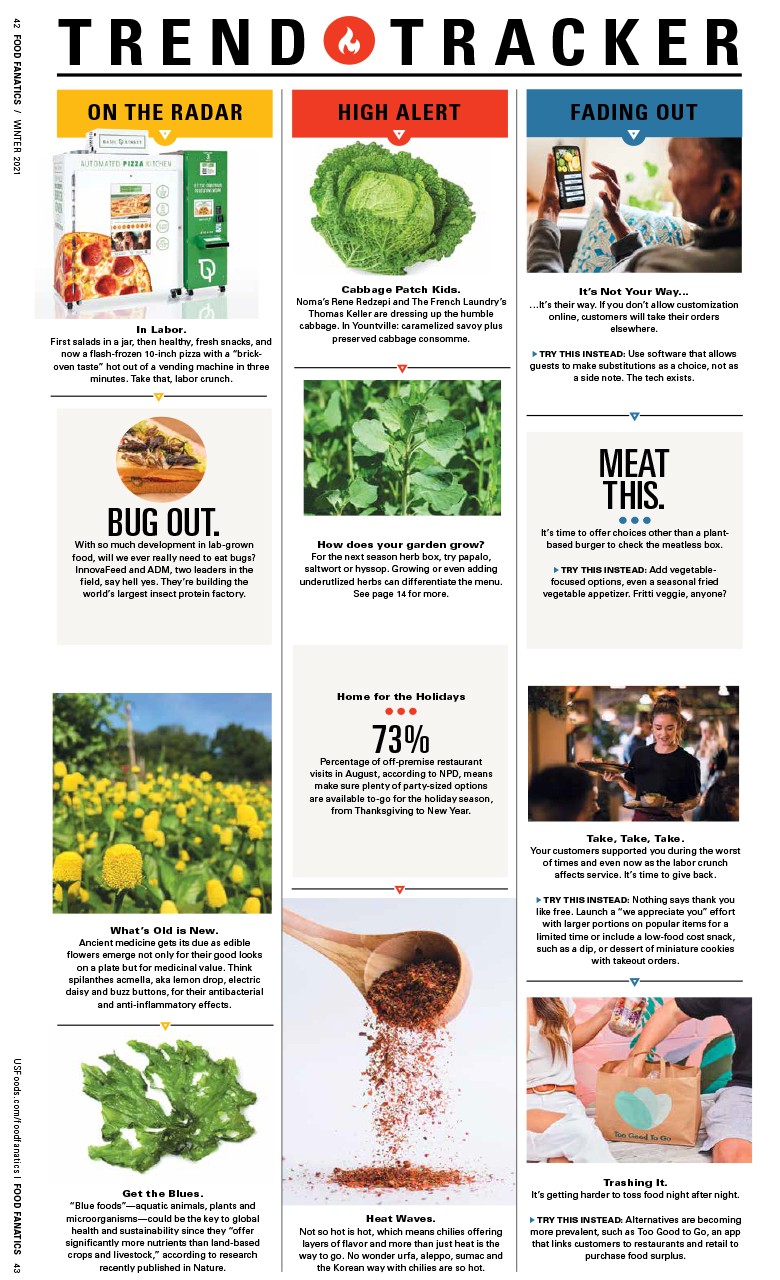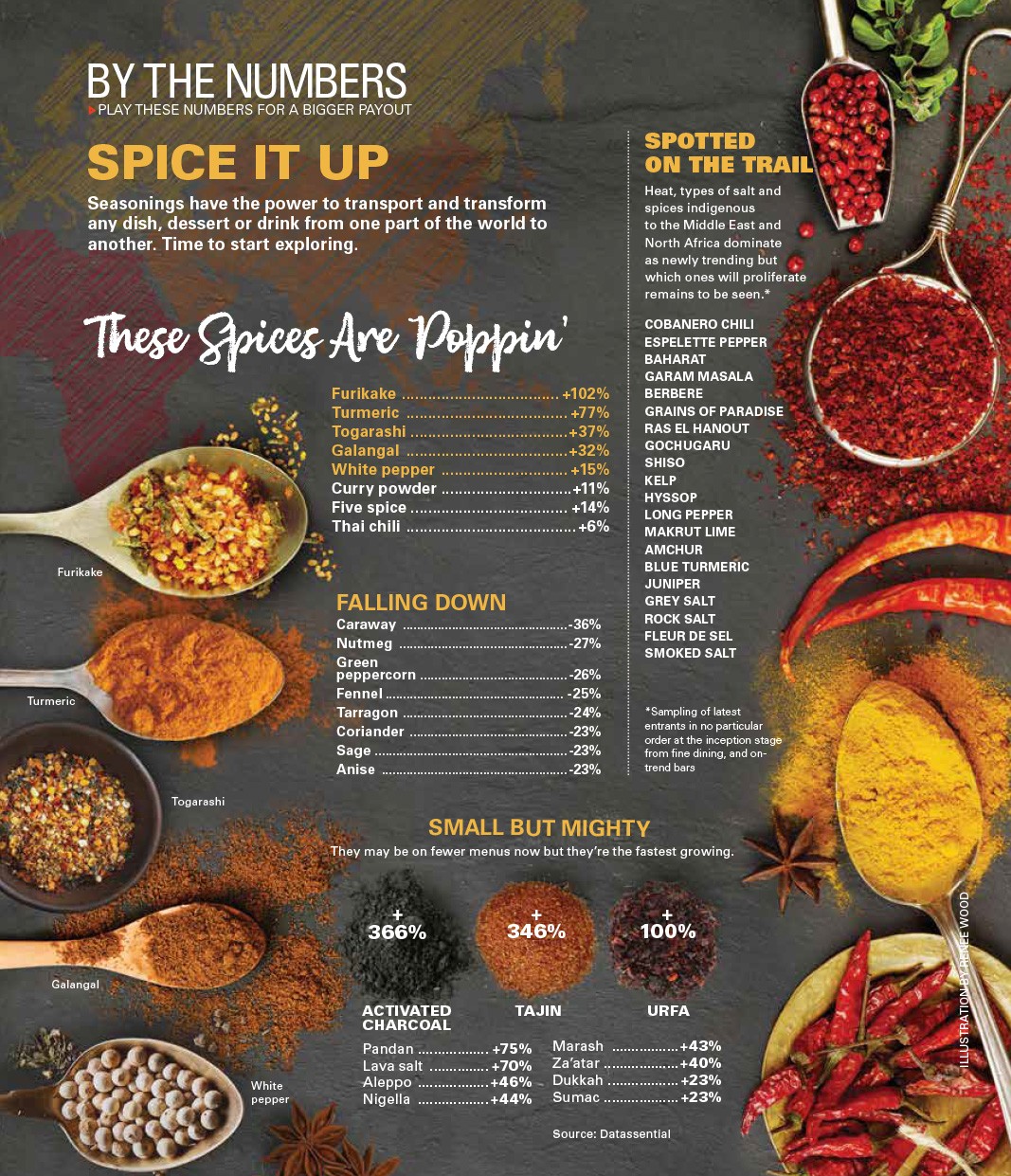Dollars to Doughnuts
Step aside, cupcake—coffee’s classic counterpart is making a slam-dunk comeback
Ralph Primo had never mixed batter, let alone fried dough, when he offered $500 to stake claim on a failing strip mall doughnut shop in 1956. Today, his Primo’s Westdale Donuts still stands as Los Angeles’s premier doughnut hole. Such impulsive dives into the unknown have inspired a new wave of designer doughnut shops from coast to coast, each with unique spins on the classic morning pastry. Their success is varied, but one thing holds true across the board: they’re satisfying customer cravings for a sweet, filling and comforting treat that can be eaten out of hand and on the run. Now, doughnuts have been reborn as fun and creative: studded with bacon, glazed with high-end chocolate or rolled in childhood cereal.
DOUGHBOY PIONEERS
Primo and his wife, Celia, were small business amateurs when they opened the doughnut shop—and benefited as the only game in town. “Today, people would tell me to develop a business plan and other considerations, but at the time, we just went for it,” Primo says, adding that the $500 to hold the retail space was originally earmarked as a down payment for his first home. “That’s the great thing about being young and stupid.”
Primo’s epitomizes the power of customer loyalty, serving doughnuts to generations of dedicated families, which is how it’s endured competition from convenience stores and encroaching franchise doughnut shops.
“We were such amateurs when we opened that our first customer handed us a dollar for his nickel doughnut and we realized our cash drawer had no change.”
—Ralph Primo, Primo’s Westdale Donuts, Los Angeles
Government regulations like zoning laws, taxation and new state trans-fat guidelines have hit the operation hard. The shop has proven to be a stable source of income, but Primo insists it’s not a get-rich business. “It’s a tough nut,” he says, “but it’s a tremendous ride to be your own boss and create your own doughnuts.”
Overall, the morning day-part has become a thriving one, allowing for the rise of quick-service breakfast concepts like Dunkin’ Donuts and daring upstarts like Voodoo Doughnuts in Portland, Ore.
When Kenneth “Cat Daddy” Pogson and Tres Shannon opened their 24-hour Voodoo Doughnuts in 2003, skeptics abounded. Cupcakes were the food industry darlings, and doughnuts sold at a national average of 40 cents apiece. With signature frills like extra frosting, crushed Oreos and bacon, Voodoo peddled doughnuts that required a higher price. Yet within a week of opening, the shop gained cult status.
“No one believed me, but I thought the nighttime would outsell the daytime,” says Pogson, whose shop rings in the most business at 2 a.m. “We purposefully opened in the drinking district because people get the munchies at night. Plus, in order to be open for the 6 a.m. rush, I have to be there all night anyway. If customers are there, might as well sell what you got.”
Nearly a decade later, Voodoo Doughnuts’ three shops are rarely without a long line at all hours of the day. At the flagship location in Portland, a team of 16 to 20 people work nonstop to maintain production demands of stocking 100 varieties and selling up to 20,000 doughnuts per day.
BECOMING A CULT MASTER
Like Voodoo, Chicago’s Doughnut Vault gained celebrity status quickly, but its meteoric rise came through social media. Three months before unveiling the shop, owner Brendan Sodikoff created the Tumblr blog of an elusive pastry chef known only as “François,” who documented doughnut-making from proofing to glazing. Every few days, he teased locals with mouth-watering photos of fluffy chocolate cake and golden glazed doughnuts, along with historical tidbits and peeks into the shop’s construction. By the opening, Sodikoff had secured his initial customers with virtually no marketing costs. Social media continues to grow his customer base.
A year and a half later, Doughnut Vault’s social media accounts provide live updates about available flavors and the length of the customer line. They also help keep tabs on customer requests. “Social media makes people feel connected to the business and want to get involved,” Sodikoff says.
As for any shop with a would-be cult following, exposure is key. The Internet has provided essential support for even longtime operations like Primo’s. Accolades from Yelp and online foodie forums helped Primo attract new business after losing several corporate accounts during the economic downturn.
For Voodoo Doughnuts, video has played a pivotal role in making the shop a tourist destination. Shannon and Pogson’s wacky personas are a natural draw for the camera, primed after former gigs in bands, and stints as a wrestling announcer and game show host, respectively.
Airy fried dough is only part of the reason customers wait outside Doughnut Vault at 8:30 a.m. The real secret is Sodikoff’s business model, which allows him to rake in $500,000 annually from this side operation, which usually sells out of doughnuts in less than four hours. Once the inventory is gone, doors close for the day.
Taking a cue from established boutique shops like Doughnut Plant in New York, Sodikoff carved a space within his existing craft cocktail salon, Gilt Bar, allowing for a minimal investment (roughly $50,000) and shared infrastructure. Limited storefront hours also help lower labor costs, providing breathing room elsewhere.
“You can produce a doughnut that’s 10 to 15 percent food cost, or you can make a product that’s 40 percent food cost,” Sodikoff says. “We tend to use high-quality ingredients like premium chocolate and fresh butter, so our food costs are usually in the high 20s.”
At Primo’s, food costs are a steep 40 percent due to pricier ingredients like soy shortening, which adheres to recent trans-fat guidelines without compromising the textural stability of his product. Voodoo’s Pogson says his base food costs are exceptionally low, but add-ons like Oreos and bacon can add up fast.
Voodoo Doughnuts generates additional revenue, however, with branded merchandise, a self-owned ATM (the shop is cash only) and even voodoo-themed weddings. Pogson has officiated a few hundred weddings since the store opened, charging $25 for fake weddings and $200 to $300 for bona fide ceremonies.
“It’s ‘the $5 Date,’ where you can buy two doughnuts, two cups of coffee and still have a quarter left for the jukebox,” Pogson says. “In bad times, people need that. For me, it’s been a recession-proof business.”
DOUGHNUT VS. DONUTGrammar dictates that donut is only used in business names as the informal version of doughnut.
|


 THE BLACK MAGIC BEHIND VOODOO DOUGHNUTS
THE BLACK MAGIC BEHIND VOODOO DOUGHNUTS Fastest seller:
Fastest seller:
